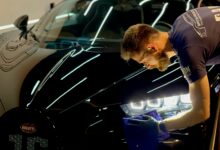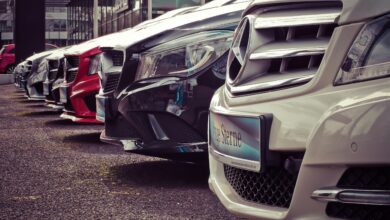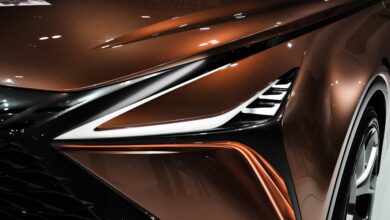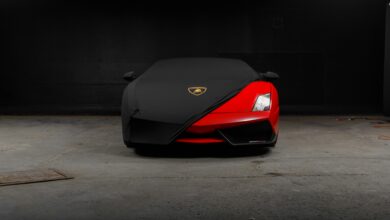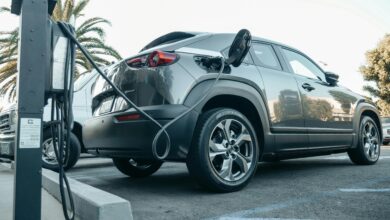
Table of contents
- The Hidden Financial Risks of Lucid Air Insurance Rates
- Understanding Luxury EV Insurance Pricing Revolution
- Identifying the Top 12 Lucid Air Insurance Mistakes
- Error 1: Overlooking Battery Coverage Specifics
- Error 2: Ignoring Advanced Driver Assistance System Insurance Needs
- Error 3: Misunderstanding Luxury EV Repair Cost Implications
- Error 4: Underestimating Charging Infrastructure Liability
- Error 5: Neglecting Autonomy Feature Liability Clauses
- Error 6: Failing to Account for Exclusive Lucid Parts Coverage
- Error 7: Overlooking Digital Key & Connectivity Security
- Error 8: Ignoring Impact of Software Updates on Coverage
- Error 9: Skipping Geographic and Cross-Border Coverage Details
- Error 10: Forgetting Customized Fleet Use Requirements
- Error 11: Misjudging Premium EV Protection Riders
- Error 12: Neglecting Depreciation and Market Value Fluctuations
- How to Secure Optimal Lucid Air Insurance Rates Coverage
- Essential Tools for Luxury EV Insurance Management
- 10 Critical Lucid Air Insurance Rates Questions Answered
- Navigating Luxury EV Insurance Requirements
- The Evolution of Lucid Air Insurance Rates and Coverage
- Protect Your Lucid Air Insurance Investment
The Hidden Financial Risks of Lucid Air Insurance Rates
Luxury EV Ownership’s Unprecedented Insurance Challenges
The Lucid Air represents the pinnacle of luxury electric vehicle engineering, but beneath its sophisticated exterior lies a complex web of insurance risks that can devastate even the most well-prepared luxury car owner’s budget. Lucid Air insurance rates have emerged as one of the most shocking hidden costs in the premium EV market, with some owners facing annual premiums exceeding $8,000—nearly triple the national average for conventional luxury vehicles1.
Recent market analysis reveals that luxury EV insurance costs have increased by 290% faster than traditional premium vehicles, creating unprecedented financial exposure for Lucid Air owners2. The vehicle’s cutting-edge technology, including its Dream Drive Pro autonomous system, proprietary Glass Cockpit interface, and industry-leading 516-mile range capability, simultaneously represents both its greatest appeal and its most significant insurance liability.
Why Lucid Air Insurance Rates Defy Traditional Expectations
What makes Lucid Air coverage particularly challenging is the convergence of multiple high-risk factors that traditional automotive insurance models struggle to assess accurately3. The vehicle’s starting price of $87,400 for the Pure model, escalating to $249,000 for the Dream Edition Range, places it in an exclusive tier where repair costs, parts availability, and specialized service requirements create perfect storm conditions for insurance complications.
Fleet managers investing in Lucid Air vehicles for executive transportation face even more complex challenges. Corporate premium electric vehicle coverage requirements involve additional liability considerations, including autonomous driving features in commercial applications4, specialized driver training protocols, and fleet management system integrations that standard luxury vehicle policies cannot adequately address.
The financial consequences extend beyond premium costs. According to the National Association of Mutual Insurance Companies (NAMIC), inadequate coverage for Lucid Air’s unique systems—from its 118 kWh battery pack to its advanced Air Suspension with adaptive damping—can result in out-of-pocket expenses that exceed the vehicle’s entire lease value, transforming what should be a premium ownership experience into a financial catastrophe3.
Understanding Luxury EV Insurance Pricing Revolution
Current Market Dynamics Driving Premium Electric Vehicle Coverage Costs
The luxury electric car insurance market has undergone dramatic transformation as premium EV adoption accelerates among affluent consumers and corporate fleets. According to ValuePenguin’s comprehensive EV insurance analysis, the average cost to insure electric vehicles is $4,043 annually—about 20% more than conventional vehicles5. However, Lucid Air owners face significantly higher premiums due to the vehicle’s positioning in the ultra-luxury segment.
High-end EV insurance pricing reflects multiple compounding factors that insurers struggle to quantify accurately6. The Lucid Air’s advanced manufacturing processes, including its proprietary battery chemistry and Space Concept interior design, create repair complexity that far exceeds conventional luxury vehicles. Insurance companies report average EV repair costs significantly higher than internal combustion engine vehicles, but Lucid Air repairs often exceed these averages by substantial margins2.
Market dynamics reveal troubling trends for prestige EV insurance availability. State Farm, typically offering competitive EV rates, often quotes Lucid Air premiums exceeding $3,000-$4,000 annually for comprehensive coverage78. This premium surge stems from limited actuarial data for ultra-luxury EVs and uncertainty about long-term reliability patterns for cutting-edge automotive technology.
The Technology Impact on Lucid Air Insurance Rates Coverage Complexity
Lucid Air’s technological sophistication creates unique insurance challenges that traditional luxury vehicle policies cannot address9. The vehicle’s DreamDrive Pro system, featuring 32 sensors including LiDAR technology, requires specialized calibration procedures costing $5,000-$12,000 per incident. Many premium EV protection policies exclude these advanced driver assistance system (ADAS) calibration costs, leaving owners exposed to catastrophic repair expenses.
The integration of Lucid’s proprietary software platform introduces additional coverage complications4. Over-the-air updates can alter vehicle performance characteristics, potentially affecting insurance coverage validity if accidents occur during or immediately after software installations. This dynamic creates unprecedented liability scenarios that traditional automotive insurance has never encountered.
Geographic Variations in Lucid Air Insurance Rates Analysis
Geographic variations in Lucid Air insurance rates reflect complex interactions between state regulations, charging infrastructure availability, and local repair facility networks10. Florida residents often face premium surcharges due to extreme weather risks affecting battery performance and charging systems9. Conversely, California owners may benefit from EV-friendly regulations but encounter higher baseline premiums due to elevated vehicle theft rates and litigation costs.
Texas Lucid Air owners report monthly premiums averaging $332 with State Farm7, while Georgia residents face shocking quotes exceeding $1,300 monthly for comparable coverage7. These dramatic variations underscore the importance of comprehensive comparison shopping and specialized EV insurance expertise when securing coverage for luxury electric vehicles.
Identifying the Top 12 Lucid Air Insurance Mistakes
Error 1: Overlooking Battery Coverage Specifics
Battery System Protection Gaps That Cost Thousands
The most catastrophic mistake Lucid Air owners make involves inadequate battery coverage. The vehicle’s 118 kWh battery pack represents approximately 35-40% of the total vehicle value, yet standard luxury EV insurance policies often exclude coverage for battery degradation, thermal runaway incidents, and charging-related damages11. Unlike conventional vehicles where engine replacement is rarely necessary, EV battery systems face unique risks that traditional coverage models cannot adequately address.
Fleet managers must specifically negotiate battery replacement coverage that includes degradation beyond warranty thresholds, thermal management system failures, and charging infrastructure interactions12. Comprehensive battery protection should encompass not only the battery cells themselves but also the sophisticated cooling systems, battery management software, and integration with Lucid’s Air Suspension system that relies on battery power for optimal performance.
Error 2: Ignoring Advanced Driver Assistance System Insurance Needs
ADAS Calibration and Liability Coverage Requirements
Lucid Air’s DreamDrive Pro system requires precise sensor calibration that can cost $8,000-$15,000 per incident following accidents or system updates3. Many Lucid Air coverage policies exclude these specialized calibration procedures, leaving owners responsible for expensive recalibration after even minor incidents. The system’s 32-sensor array, including cameras, radar, ultrasonic sensors, and LiDAR technology, creates calibration complexity that exceeds most luxury vehicles.
The liability implications of autonomous driving features present additional challenges4. When DreamDrive Pro is engaged during accidents, determining fault becomes extremely complex, involving vehicle telemetry analysis, software version verification, and sensor data interpretation that traditional insurance adjusters cannot perform competently.
Error 3: Misunderstanding Luxury EV Repair Cost Implications
Exclusive Manufacturing and Service Requirements
Lucid Air’s Space Concept interior design and proprietary manufacturing processes create repair scenarios that conventional luxury vehicle policies cannot anticipate6. The vehicle’s Glass Cockpit display system, featuring a curved 34-inch 5K display, requires specialized replacement procedures that can cost $25,000-$40,000 including calibration and integration testing.
Premium electric vehicle coverage must account for Lucid’s limited service network and exclusive parts distribution system3. Unlike established luxury brands with extensive dealer networks, Lucid Air repairs often require transportation to specialized service centers, creating additional coverage needs for extended rental vehicles, transportation costs, and potential business interruption for fleet operators.
Error 4: Underestimating Charging Infrastructure Liability
Home and Commercial Charging Risks
Lucid Air’s 900V architecture enables rapid charging capabilities that create unique liability scenarios9. Home charging installations require electrical system upgrades that can affect property insurance coverage, while public charging incidents may involve complex liability determinations between vehicle owners, charging network operators, and utility companies.
High-end EV insurance policies often exclude coverage for electrical system modifications, charging equipment failures, and power grid interactions that can result in property damage or personal injury9. Fleet operators face additional challenges when installing commercial charging infrastructure that serves multiple vehicles and involves complex electrical installations.
Error 5: Neglecting Autonomy Feature Liability Clauses
Software-Driven Liability Complexities
The Lucid Air’s sophisticated autonomous driving capabilities create liability scenarios that traditional insurance models cannot address104. As autonomous features become more advanced, determining responsibility during accidents becomes increasingly complex, involving manufacturer liability, software performance analysis, and driver responsibility assessment.
Many insurers exclude coverage for autonomous driving incidents or require separate riders that can cost thousands annually10. Luxury electric car insurance policies must explicitly address liability scenarios where autonomous systems are engaged, including software malfunctions, sensor failures, and human override situations.
Error 6: Failing to Account for Exclusive Lucid Parts Coverage
Parts Scarcity and Distribution Challenges
Lucid’s limited production volume and exclusive manufacturing processes create parts availability challenges that can affect claim settlements and repair timelines3. Unlike mass-market vehicles with extensive parts networks, Lucid Air components often require extended lead times and specialized shipping procedures that standard policies don’t accommodate.
Prestige EV insurance coverage must address scenarios where parts unavailability extends repair durations beyond standard rental car coverage limits6. This becomes particularly problematic for fleet operators who require guaranteed vehicle availability for business operations.
Error 7: Overlooking Digital Key & Connectivity Security
Cybersecurity and Access Control Risks
Lucid Air’s mobile key technology and constant connectivity create unique security vulnerabilities that traditional theft coverage cannot address4. Digital key hacking, mobile app security breaches, and remote access vulnerabilities represent emerging risk categories that standard automotive insurance hasn’t traditionally covered.
The vehicle’s sophisticated connectivity systems, including over-the-air updates and remote diagnostic capabilities, create potential entry points for cybercriminals that could compromise vehicle security or personal data4. Insurance coverage must address both traditional theft scenarios and emerging cybersecurity threats.
Error 8: Ignoring Impact of Software Updates on Coverage
Over-the-Air Update Complications
Lucid’s continuous software improvement program can alter vehicle performance characteristics, potentially affecting insurance coverage validity4. Software updates that modify acceleration profiles, autonomous driving capabilities, or safety system behavior may impact liability determinations and coverage applicability.
Insurance policies must explicitly address how software updates affect coverage validity and claim processing3. This includes scenarios where accidents occur during update installations, performance changes that affect risk profiles, and software-related system failures that cause accidents or property damage.
Error 9: Skipping Geographic and Cross-Border Coverage Details
Interstate and International Travel Limitations
Lucid Air owners frequently travel across state boundaries for business or leisure, creating coverage complications related to varying state insurance requirements and charging infrastructure availability10. Many premium EV protection policies provide limited coverage for interstate travel emergencies, particularly when charging infrastructure failures strand vehicles in remote locations.
International travel presents additional challenges, as Lucid Air’s advanced systems may not be supported in all countries, creating potential coverage gaps for business executives who require reliable transportation across borders10.
Error 10: Forgetting Customized Fleet Use Requirements
Commercial Application Insurance Needs
Fleet managers using Lucid Air vehicles for executive transportation, luxury ride services, or corporate mobility programs face complex coverage requirements that personal insurance policies cannot address13. Commercial applications involve additional liability scenarios, driver training requirements, and operational considerations that require specialized coverage approaches.
Business use exclusions in personal policies can void coverage entirely if Lucid Air vehicles are used for commercial purposes without proper policy modifications9. This creates significant exposure for companies investing in luxury EV fleets without comprehensive commercial coverage.
Error 11: Misjudging Premium EV Protection Riders
Supplemental Coverage Assessment Errors
Many Lucid Air owners underestimate the value of specialized EV protection riders that address unique electric vehicle risks12. Gap coverage, battery degradation protection, and technology obsolescence insurance can provide crucial financial protection that standard comprehensive policies exclude.
The cost-benefit analysis of additional riders requires careful consideration of individual risk profiles, usage patterns, and financial capacity to absorb potential losses14. Professional risk assessment becomes essential for making informed decisions about supplemental coverage investments.
Error 12: Neglecting Depreciation and Market Value Fluctuations
Valuation and Total Loss Complications
Lucid Air vehicles experience unique depreciation patterns affected by technology advancement, software updates, and market demand fluctuations14. Standard total loss valuations may not reflect actual replacement costs or account for technology premiums that affect market values.
Insurance policies must address how rapid technological evolution affects vehicle valuations and replacement cost calculations6. This becomes particularly important for lease returns and early termination scenarios where market values may not align with contractual obligations.

How to Secure Optimal Lucid Air Insurance Rates Coverage
Step 1: Comprehensive Risk and Coverage Assessment
Professional Risk Analysis Framework
Begin securing optimal Lucid Air insurance rates by engaging specialized luxury EV insurance consultants who understand the unique risk profiles associated with ultra-premium electric vehicles1513. Professional risk assessment should evaluate your specific Lucid Air model configuration, usage patterns, geographic operating environment, and potential exposure scenarios that standard insurance evaluations might overlook.
Document all vehicle-specific features, including DreamDrive Pro capabilities, Glass Cockpit configurations, Air Suspension settings, and any custom modifications or accessories using the Department of Energy’s Vehicle Cost Calculator16. This comprehensive inventory becomes crucial for accurate coverage determination and streamlined claims processing. Professional consultants can leverage industry databases and actuarial tools to identify potential coverage gaps before they become costly problems.
Step 2: Tailored Policy Optimization with Expert Brokers
Specialized Coverage Negotiation
Work with insurance brokers who specialize in luxury EV insurance to negotiate explicit coverage for identified risk areas15. Focus on securing comprehensive battery system protection, ADAS calibration coverage, and autonomous driving liability provisions that standard luxury vehicle policies typically exclude. Consider supplemental policies that address charging infrastructure liability and technology-specific risks unique to Lucid Air ownership.
Evaluate multiple carrier options simultaneously, comparing not just premium costs but coverage comprehensiveness across all identified risk categories1718. Some insurers may excel in battery coverage while others provide superior ADAS protection, requiring careful coordination to achieve optimal overall protection.
Step 3: Dynamic Monitoring and Policy Adjustments
Ongoing Coverage Management
Establish quarterly policy reviews to address Lucid Air software updates, feature additions, and evolving risk profiles14. As Lucid continues releasing new capabilities through over-the-air updates, insurance coverage must evolve accordingly to maintain comprehensive protection. Implement systematic claims documentation procedures that leverage Lucid Air’s sophisticated telemetry systems for improved claims processing outcomes.
Monitor regulatory changes and industry developments that may affect premium electric vehicle coverage requirements or create new coverage opportunities3. Professional insurance management becomes increasingly important as the luxury EV market continues evolving rapidly.
Step 4: Fleet-Specific Risk Management Strategies
Commercial and Fleet Considerations
Fleet managers must develop comprehensive driver training programs that address insurance implications of Lucid Air’s advanced features9. Ensure all authorized drivers understand how DreamDrive Pro usage, charging procedures, and emergency protocols affect coverage validity and claim outcomes.
Establish relationships with Lucid-certified service facilities and pre-negotiate repair authorization processes to avoid claim disputes13. Understanding the limited service network and parts distribution challenges enables proactive risk management that can prevent coverage complications during claim events.
Essential Tools for Luxury EV Insurance Management
Specialized Insurance Brokers and Consultation Services
Partner with insurance professionals who maintain specialized expertise in high-end EV insurance and understand Lucid Air’s unique risk profiles1513. These specialists have access to carrier programs specifically designed for ultra-luxury electric vehicles and can navigate complex coverage negotiations that general insurance agents cannot match effectively.
Professional consultation services provide ongoing support for policy management, claims advocacy, and regulatory compliance monitoring. Many specialized firms offer dedicated account management for high-value clients, ensuring personalized attention and proactive risk management throughout the ownership experience.
Technology Solutions and Safety Monitoring Tools
Implement telematics and vehicle monitoring systems that can potentially reduce prestige EV insurance premiums through demonstrated safe driving behavior and proactive risk management14. Many insurers offer usage-based insurance programs that reward responsible driving patterns with significant premium reductions.
Utilize Lucid Air’s integrated connectivity features for insurance management, including real-time vehicle status monitoring, maintenance scheduling, and incident documentation9. The vehicle’s sophisticated data logging capabilities provide unprecedented claim documentation that can improve outcomes during complex claim scenarios.
Regulatory and Compliance Resources
Stay current with federal and state regulations affecting luxury EV insurance requirements and available incentive programs using resources like the Department of Energy’s Alternative Fuels Data Center16. Many jurisdictions offer EV-specific insurance benefits or regulatory protections that can offset higher premiums or provide additional coverage options for qualifying vehicles and operators.
Monitor National Highway Traffic Safety Administration guidelines for autonomous vehicle insurance requirements10, as these regulations continue evolving and directly impact Lucid Air coverage needs. Professional regulatory monitoring services can provide timely updates about changes that affect insurance requirements or coverage availability.
Financial Planning and Warranty Integration
Consider comprehensive warranty programs that complement insurance coverage, particularly for battery and electronic systems that insurance policies may exclude1112. Extended warranty coverage can provide crucial financial protection for technology-related failures that fall outside traditional insurance coverage scope.
Evaluate umbrella policies that extend beyond standard automotive coverage to address Lucid Air’s unique liability scenarios9. High-net-worth individuals particularly benefit from additional liability protection given the vehicle’s association with wealth and potential targeting for litigation or theft.
10 Critical Lucid Air Insurance Rates Questions Answered
Coverage and Cost Inquiries
Q1: Why are Lucid Air insurance rates significantly higher than conventional luxury cars?
Lucid Air insurance rates reflect the vehicle’s ultra-premium pricing, advanced technology complexity, limited repair network, and insufficient actuarial data for accurate risk assessment25. Premiums can range from $1,200 to $8,000 annually depending on coverage levels and geographic location78.
Q2: Does Lucid offer proprietary insurance programs for Air owners?
Currently, Lucid Motors does not offer proprietary insurance programs comparable to Tesla Insurance. Owners must secure coverage through traditional carriers1718, making specialized broker consultation essential for optimal protection.
Q3: Are autonomous driving features covered under standard policies?
Most standard luxury electric car insurance policies exclude autonomous driving incidents or require expensive supplemental riders104. DreamDrive Pro coverage requires explicit policy modifications and specialized liability protection.
Technical and Operational Questions
Q4: How should owners handle charging infrastructure liability risks?
Charging infrastructure risks require separate coverage beyond standard automotive policies9. This includes electrical system modifications, equipment failures, and grid interaction scenarios that can cause property damage or personal injury.
Q5: What happens if Lucid parts become unavailable for repairs?
Parts scarcity can extend repair timelines beyond standard rental coverage limits3. Premium EV protection policies should include extended rental provisions and alternative transportation coverage for parts-related delays.
Fleet and Commercial Considerations
Q6: Are there specific fleet insurance considerations for commercial Lucid Air use?
Commercial fleets require specialized coverage addressing driver training, fleet management systems, and business liability scenarios not covered by personal policies913. Professional fleet insurance consultation becomes essential for comprehensive protection.
Q7: How do software updates affect insurance coverage validity?
Over-the-air updates can alter vehicle performance characteristics, potentially affecting coverage validity4. Policies should explicitly address how software changes impact liability determinations and claim processing procedures.
Geographic and Regulatory Issues
Q8: Can insurance costs vary significantly by state for Lucid Air coverage?
Yes, Lucid Air coverage costs vary dramatically by state due to regulatory differences, charging infrastructure availability, and local risk factors710. Geographic comparison shopping is essential for cost optimization.
Q9: What documentation supports Lucid Air insurance claims most effectively?
Lucid Air’s comprehensive data logging provides detailed telemetry for claims processing3. Proper documentation procedures and professional claims advocacy can leverage this information for improved outcomes.
Q10: How can owners reduce premium costs while maintaining comprehensive protection?
Premium reduction strategies include usage-based insurance programs, safety monitoring systems14, comprehensive comparison shopping, and professional risk management consultation to optimize coverage-to-cost ratios.
Navigating Luxury EV Insurance Requirements
Federal Insurance Standards for Luxury EVs
Luxury EV insurance compliance involves navigating complex federal regulations that continue evolving as electric vehicle adoption accelerates10. The National Highway Traffic Safety Administration provides guidance on autonomous vehicle insurance requirements that directly impact Lucid Air owners utilizing DreamDrive Pro features10. Federal standards increasingly focus on data privacy, cybersecurity, and autonomous system liability that traditional automotive insurance regulations never addressed.
State-Specific Luxury EV Insurance Regulations
State-level regulations vary significantly in their treatment of high-end EV insurance requirements and consumer protections10. Some states mandate specific coverage levels for electric vehicles, while others provide regulatory incentives that can reduce premium costs for qualifying vehicles and operators. Understanding state-specific requirements becomes crucial for maintaining compliance while optimizing coverage costs and benefits.
Data Privacy and Telemetry Compliance
Insurance companies must comply with data privacy regulations when utilizing Lucid Air’s vehicle telemetry for pricing and claims processing4. The intersection of automotive data collection and insurance regulation creates ongoing compliance challenges that affect policy terms, coverage availability, and claims processing procedures. Professional compliance monitoring ensures adherence to evolving privacy standards while maximizing the benefits of advanced vehicle connectivity.
The Evolution of Lucid Air Insurance Rates and Coverage
Advancements in Autonomous Vehicle Insurance Models
The luxury EV insurance landscape will undergo significant transformation as autonomous driving technology matures and regulatory frameworks evolve4. As Lucid’s DreamDrive Pro capabilities advance toward full autonomy, insurance responsibility may shift from individual owners to technology manufacturers, creating entirely new coverage paradigms that require adaptive policy structures and innovative risk assessment methodologies.
Impact of Battery Technology Innovations on Coverage
Battery technology improvements and cost reductions will likely decrease Lucid Air insurance rates over time as replacement costs decline and thermal management risks become better understood1114. However, increasing vehicle sophistication may offset these savings through more complex coverage requirements and specialized service needs that maintain premium pricing structures.
Growth of Intelligent EV Insurance Products
Insurance companies are developing specialized products that leverage real-time vehicle data for dynamic pricing and proactive risk management14. These intelligent insurance solutions will provide more accurate risk assessment and potentially lower premiums for responsible Lucid Air owners who demonstrate safe driving patterns and proactive maintenance behaviors.
Regulatory Standardization Efforts
Regulatory harmonization across states and potential federal luxury EV insurance standards may standardize coverage requirements and eliminate current geographic variations that create confusion and cost disparities for Lucid Air owners310. Industry standardization efforts will likely improve coverage consistency while maintaining competitive pricing options.
Protect Your Lucid Air Insurance Investment
Recognizing and Avoiding Costly Insurance Errors
The 12 critical insurance errors identified in this analysis represent clear financial dangers that can transform Lucid Air ownership from a premium luxury experience into a financial catastrophe36. Lucid Air insurance rates must be evaluated comprehensively, considering not just premium costs but coverage adequacy across all identified risk categories. The sophisticated technology that makes Lucid Air vehicles revolutionary simultaneously creates unprecedented insurance vulnerabilities that require specialized expertise and proactive risk management.
Implementing a Strategic Insurance Approach
Fleet managers and individual owners cannot afford to delay addressing these coverage vulnerabilities9. Begin immediately by engaging specialized luxury EV insurance professionals1513, conducting comprehensive risk assessments using tools like the DOE’s Vehicle Cost Calculator16, and implementing the strategic framework outlined in this analysis. Professional consultation and ongoing policy management become essential investments in protecting your Lucid Air ownership experience.
Ensuring Long-Term Luxury EV Ownership Success
Your Lucid Air represents more than premium transportation—it embodies an investment in cutting-edge automotive technology that deserves protection worthy of its innovation and your confidence in the luxury EV future14. Take decisive action today to transform potential coverage gaps into comprehensive protection that safeguards both your investment and your peace of mind throughout the luxury electric vehicle ownership journey.
Disclaimer: This article is for educational purposes only and does not constitute professional insurance advice. Individual circumstances vary significantly, and readers should consult with licensed insurance professionals for personalized guidance. The information presented is current as of July 2025 and subject to regulatory changes.


